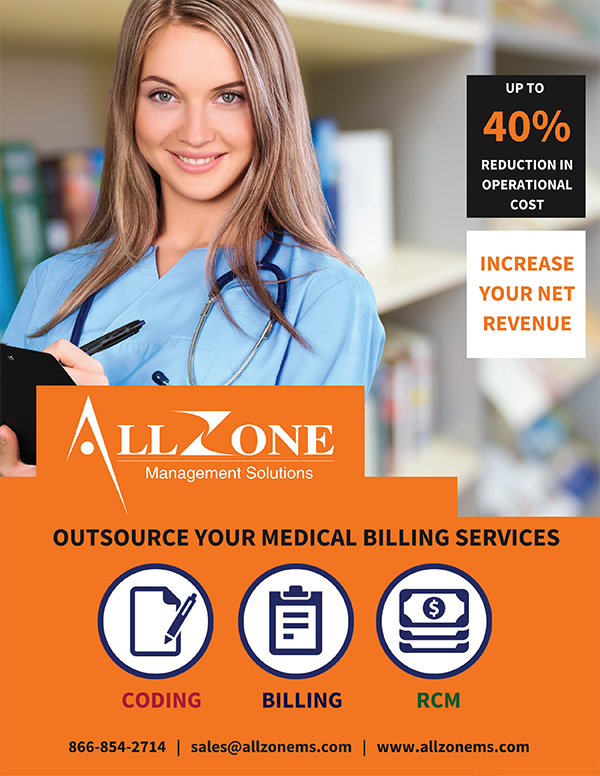
Chasing Self-Pay Revenue in Emergency Medicine
During the American College of Emergency Physicians (ACEP) January 2018 Reimbursement and Coding Conference held in Nashville, three emergency physician billing hurdles were discussed. This article explores these obstacles and presents practical strategies to improve self-pay revenue and patient deductible management in emergency medicine.
By Tyler Williams

Emergency medicine billing carries a unique set of reimbursement challenges. Highly trained emergency physicians are under constant pressure to reduce wait times while providing the highest levels of care to every patient—even those without insurance coverage or demographic data. Patients are prioritized over paperwork. Addressing trauma trumps information intake. In addition, the collection of insurance details takes a back seat to treating life-or-death healthcare concerns.
The essential nature of emergency medicine requires effective up-front processes and a customized billing approach, especially for patients treated as self-pay or those with high deductibles.
During the American College of Emergency Physicians (ACEP) January 2018 Reimbursement and Coding Conference held in Nashville, three emergency physician billing hurdles were discussed. This article explores these obstacles and presents practical strategies to improve self-pay revenue and patient deductible management in emergency medicine.
Three Self-Pay Billing Challenges to Know
Whether self-pay patients are uninsured, underinsured, or members of a high-deductible health plan (HDHP), practices face three barriers to receiving optimal and timely reimbursement in emergency medicine
Laws: The Emergency Medical Treatment and Labor Act (EMTALA) is a federal law that requires all emergency medicine providers to stabilize and treat patients regardless of ability to pay. Enacted in 1986, the law ensures that self-pay patients receive treatment. EMTALA is good news for patient care but places emergency medicine billing and collections staff at an immediate disadvantage. Self-pay patients aware of EMTALA are often remiss to pay any portion of their treatment up front, resulting in lower cash collections and longer billing cycles for these patients.
Payer Contracting Issues: Underpayment by payers is another common issue in emergency medicine. Bad payer behavior runs rampant in emergency services. In fact, ACEP filed suit against the U.S. Department of Health and Human Services (HHS) in 2016 on behalf of their emergency medicine members to require transparency of data and fair coverage for patients presenting out-of-network because of a medical emergency. While the case continues to be reviewed by federal agencies, private payer efforts to curb emergency reimbursement plague providers.
Advertisement. Click on image to visit advertiser's website. Story continues below.

|
Anthem announced an avoidable emergency room (ER) policy in 2017 as part of an effort to circumvent reimbursements for non-emergency visits. The payer will only cover ER visits based on certain conditions. Anthem’s avoidable ER policy exists in Georgia, Missouri, Ohio, Indiana, New Hampshire, and Kentucky. Piedmont Healthcare in Atlanta recently challenged the policy and legal review is pending. In the wake of Piedmont’s suit, Anthem expanded its list of “always-approve” exceptions to the avoidable ER policy, but also stated that medical records may be required as part of claim reviews.
New Patient Pay Realities
According to Black Book’s 2017 Revenue Cycle Management survey, patient responsibility has jumped 29 percent as greater numbers of consumers are enrolled in HDHPs. Payer mix is shifting with patients taking the lead. As patients become primary payers, all medical practices should understand and address the following concerns:
- Slow payment of HDHP patients is a top collection challenge for 83 percent of small physician practices.
- Practice staff experience difficulty communicating patient payment accountability in 81 percent of practices.
- Insurance eligibility verification, cost estimations and payment convenience enhancements are top issues.
Source: Black Book’s 2017 Revenue Cycle Management Survey (www.blackbookresearch.com) |
Amid the fallout from these types of contracting issues, emergency physicians, billing companies, and patients are feeling the pain of bad payer behavior. Here are three common scenarios:
- State-by-state balance billing practices for out-of-network providers vary and remain a point of contention for emergency medicine providers. Physicians are not always entitled to fair reimbursement, even if the organization is not contracted with the payer.
- Payers down-code claims when the patient’s presenting symptoms don’t match the final diagnosis or when they later determine the encounter wasn’t an emergency. In recent national news, Anthem’s policy for cutting emergency coverage practically expects patients to diagnose themselves and is being touted by ACEP as unlawful and unfair.
- Commercial payers push for government reimbursement rates with the emergency medicine practice. For example, the average Medicaid and Medicare reimbursement for a Level 3 visit may only be $75. Even though highly trained and board-certified physicians are delivering care, the commercial payers are requesting lower rates—down to the Medicare rate or less in many cases.
Lack of Information: According to Payor Logic, up to 60 percent of the patient demographic information is incorrect or missing during emergency situations, which results in the practice’s inability to submit a clean claim. Common culprits include incorrect addresses, phone numbers, Social Security numbers, and insurance coverage details. Physicians must rely on the patient or the patient’s family during these times when focus should be squarely on patient care—not collecting demographic data.
Given these specific challenges inherent in processing emergency medicine claims, many practices and billing companies are instituting new processes and technologies to recover the money owed to them.
Three Strategies to Manage Self-Pay Revenue:
Staying Ahead of the Curve
Even the best and most efficient business office employees take about an hour to process eight to 10 self-pay accounts. Time spent is largely consumed by populating demographics, searching for insurance, and using myriad third-party services to fill in additional blanks as part of normal due diligence. As the volume of self-pay accounts climbs, new strategies to better manage self-pay revenue become essential.
There are three pre-bill activities emergency medicine practices and billing companies find most effective and cost-efficient: verifying patient demographics, identifying billable insurance coverage, and checking patient propensity to pay.
Verify patient demographics: The primary reason for denied claims and failed insurance eligibility is faulty patient demographic data. By implementing demographic verification technology and processes, emergency practices and billing companies ensure the right bills are sent to the correct payer and address—even when the payer is the patient.
New consumer databases search demographic attributes including name, address, date of birth, and Social Security number to confirm identity upfront in the billing process. These databases can also be integrated within practice billing software to proactively run demographic queries. Up-front verification achieves the following staff efficiencies and cost reductions:
- Reduced returned mail and billing costs
- Fewer claims rejections and payment delays
- Minimized HIPAA and breach risk
- Improved statement delivery
- Faster insurance discovery
Find billable insurance coverage real-time: Another important area for technological advancement and automation is insurance discovery for self-pay patients. In our research, emergency providers may have up to 35 percent of their encounters per week with no insurance on file.
New Medicare Reality: Changing HICNs
An impending Medicare change will present new billing and reimbursement challenges for all healthcare providers—not just emergency medicine.
Beginning April 1, 2018, CMS is removing Social Security numbers (SSNs) from the Health Insurance Claim Number (HICN) of over 150 million Medicare recipients, including approximately 60 million active Medicare patients. The new Medicare Beneficiary Identifiers (MBIs) will be assigned over an 18-month crossover period.
While the change will affect all providers, emergency services providers are expected to be particularly susceptible to billing errors and reimbursement delays since most of their patients are one-time encounters without established relationships as is common in other physician specialties. Other stakeholders including the Social Security Administration, state Medicaid agencies, and health plans will also be impacted.
The biggest concern is that providers won’t have access to the new MBIs to adjudicate claims. While Medicare states both the original SSN-based Health Insurance Claim Number (HICN) and MBI can be used during the transition period, reimbursement glitches are highly likely.
Stay informed and aware of CMS news to navigate this important Medicare billing change.
Here are three key points to know:
- Providers must submit claims using only the new MBIs (with a few exceptions) starting Jan. 1, 2020.
- Providers are unable to query CMS to locate the MBI, making patients responsible to present their new
Medicare cards at time of an emergency room visit or healthcare encounter.
- Additional up-front patient registration and biller time may be needed to verify new MBIs for Medicare patients.
1 New Medicare Cards. CMS.gov. 2017. https://www.cms.gov/Medicare/New-Medicare-Card/ |
The goals for real-time insurance discovery are twofold: eliminate manual steps and increase workflow efficiency. Traditional methods include sending lists of self-pay patients to a clearinghouse or insurance service, waiting three days for feedback, and then re-entering information into the practice’s billing system. However, new proactive, integrated processes are now considered best practice.
For example, at one emergency company, a real-time technology solution was implemented between the company’s clearinghouse and internal software. By integrating the applications, the billing company’s insurance verification team has immediate access to online insurance search capabilities. Lists, batches, searching websites, and waiting for results have all been eliminated. Also, the two vendors built a crosswalk that integrates insurance coverage results back into the billing company’s system to eliminate duplicate data entry.
The emergency billing company’s verification team now can do the work of three staff with only two employees, a 30 percent boost in staff efficiency for insurance verification.
Check patient propensity to pay and filter self-pay accounts: Finally, by first determining the collectability of self-pay encounters, billing and collection staff focus their efforts only on patients most able to pay or be placed on a payment plan. This proactive filtering of accounts becomes even more critical as deductibles and copays continue their upward trend. Effective propensity-to-pay filtering achieves the following benefits:
- Quickly moves patients with low propensity to pay to charity care, Medicaid or write-offs
- Improves staff efficiency by reducing the volume of accounts to work and focusing efforts
- Lowers cost to collect with fewer accounts sent to collections agencies as early-out-self-pay
Cut Self-Pay Loss in Emergency Medicine
Emergency encounters are just that: emergencies. There is limited time to gather correct demographics or checking insurance eligibility. However, it’s imperative that billing staff know the exact demographics, coverage, and eligibility on the front end versus waiting until a claim is denied by the payer. By focusing on the three proactive strategies mentioned above, emergency practices and billing companies reduce cost and risk, especially in an era of changing legal, payer, and patient dynamics.
 Tyler Williams is the president of Payor Logic Inc., a technology company whose goal is to increase healthcare provider revenue by delivering actionable data and workflow for maximum reimbursement and patient balance resolution. Tyler Williams is the president of Payor Logic Inc., a technology company whose goal is to increase healthcare provider revenue by delivering actionable data and workflow for maximum reimbursement and patient balance resolution.
Resources
1 ACEP Sues Federal Government. American College of Emergency Physicians. May 19, 2016. http://newsroom.acep.org/ 2016-05-19-ACEP-Sues-Federal-Government
2 Piedmont Hospitals Sue Blue Cross. The Atlanta Journal-Constitution. February 13, 2018. http://www.myajc.com/ news/state--regional-govt--politics/piedmont-hospitals-
sue-blue-cross-over-new-limits-and-imaging/ cUAcTStSxTO3hgK2TuBsDM/
|



 Tyler Williams is the president of Payor Logic Inc., a technology company whose goal is to increase healthcare provider revenue by delivering actionable data and workflow for maximum reimbursement and patient balance resolution.
Tyler Williams is the president of Payor Logic Inc., a technology company whose goal is to increase healthcare provider revenue by delivering actionable data and workflow for maximum reimbursement and patient balance resolution.